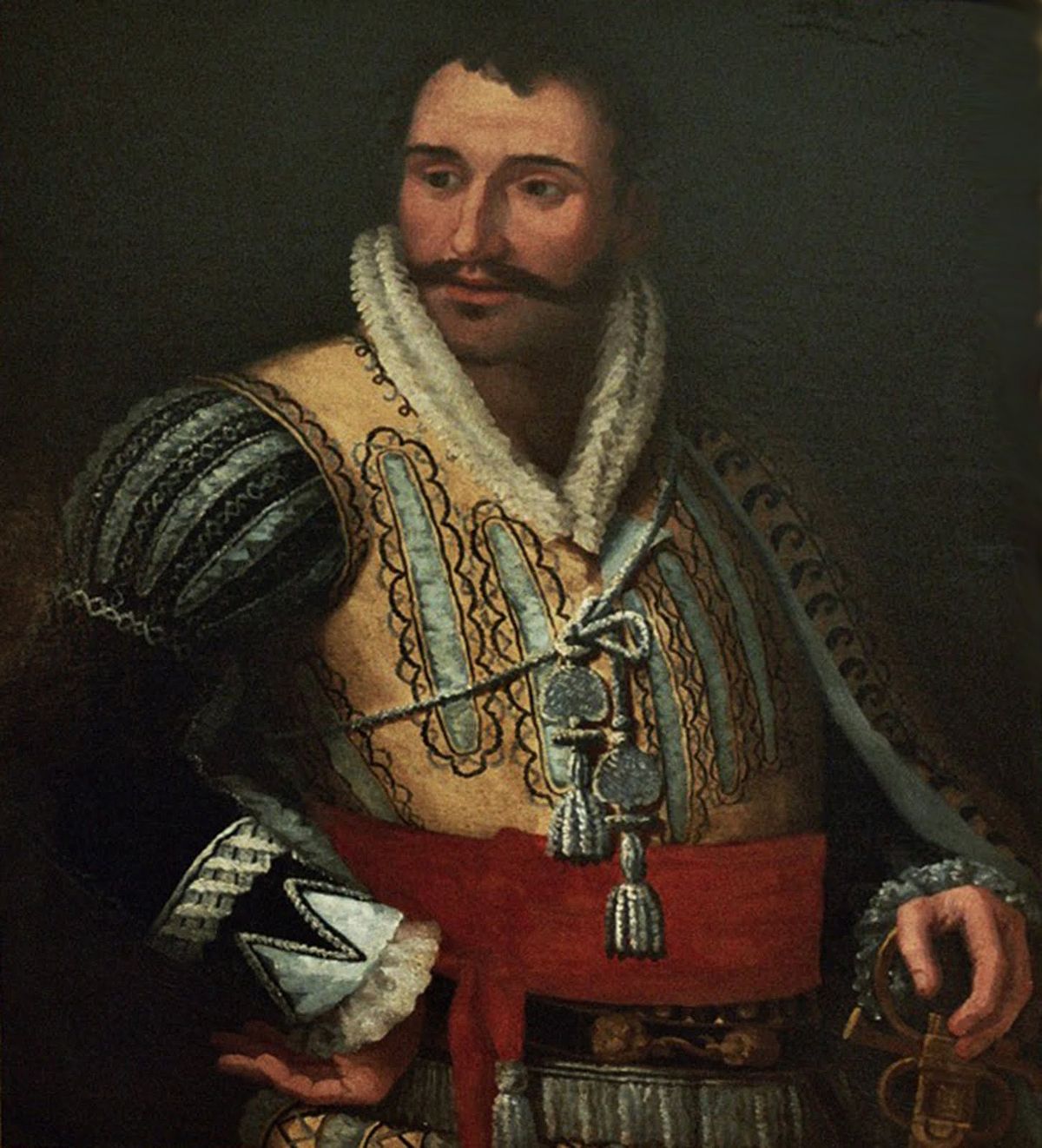Return to Spain in 1811

Coronel John Downie in 16th century dress, in the Museo de las Cortes de Cadiz
Following his return to Spain, John took command on the Loyal Legion of Estremadura and led it in actions of Don Benito and Medellin on 7 March 1811, and skirmishes of Arroyo del Puerco (28 August 1811) and Arroyo Molino (28 October 1811). [Rogers, p. 151] He was by all accounts a flamboyant character, not least in his decision to dress in the manner of more than 250 years earlier, the time of King Charles V of Spain and of the explorer Francisco Pizarro, who was born in Estremadura. It has been said that he dressed his troops in a similar fashion and this may have been a recruiting ploy designed to appeal to the Spanish pride in their history.
Wellington had revised his opinion of Colonel Downie's military worth, if not his ability to command British officers, when he wrote to Lord Liverpool from Richoso on 1 October 1811:
Colonel Downie, and particularly General Carroll, are more fit to command corps than many, or perhaps than any, of the Officers to be found in the Spanish service. .... I conceive that the British Government cannot apply their resources alloted for the support of the cause in Spain better than by supplying arms, clothing, accoutrements, and necessaries for the troops to be raised and commanded by these Officers. ... The employment of British Officers would make no difference in this respect. ... I recommend it to your Lordship not to allow British Officers to serve with the Spanish troops, till adequate means of paying and providing for these troops, at least when engaged in operations with the enemy, shall be found. ... Neither Brig. General Carroll nor Colonel Downie are persons of that character in the military profession to be able to protect and support the British Officers in the performance of their duty in the Spanish service, or to presever due subordination among them, in relation to the Spanish Officers and authorities.
[Gurwood pp. 313-5]
After the taking of Arroyo Molino, which rather than the skirmish mentioned by Rogers was a full military assault, Lieutenant General Rowland Hill wrote to Wellington from Merida on 30 October 1811with a full description of the operation. He added 'Brig. General the Conde de Penne Villemur, Brig. General Morillo, Colonel Downie, and the Spanish Officers and soldiers in general have conducted themselves in a manner to excite my entire approbation.' [ibid. pp. 380-384]
While Wellington was confronting Marshal Soult at Badajoz, 215 km to the north, Colonel Downie and his Legion took part in the Battle of Espartinas, a short distance to the West of Seville, on 5 April 1812. By all accounts, the Legion and its leader performed very well, and on 5 April 1812, in recognition of their prowess, the Legion was awarded the Cross of St Fernando, to be affixed to their colours and to the epaulettes of their officers, while John Downie was appointed Brigadier-General.
The Caledonian Mercury of 24 June 1812 reported that Brigadier General Downie had been in Gibraltar and had left on 5 June with Lord Fife to pay a visit to General Ballesteros's army near Bornos.
Bibliography
Gurwood, John, comp (1837-8) The dispatches of Field Marshall the Duke of Wellington during his various campaigns in India, Denmark, Portugal, Spain, the Low Countries, and France, from 1799 to 1818. Vol. 8. London, J. Murray
Rogers, Graciela Iglesias (2013) British Liberators in the Age of Napoleon: Volunteering under the Spanish Flag in the Peninsular War. London and New York, Bloomsbury.